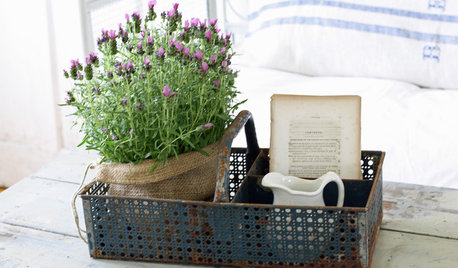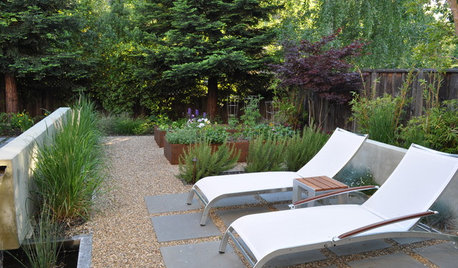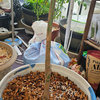Potted Nagami Kumquat needs new soil
jenn
13 years ago
Related Stories

GARDENING GUIDESGreat Design Plant: Kumquats for a Juiced-Up Winter
Grow it for the edible fruit or its good looks alone. This citrus cousin will brighten any gray winter day
Full Story
FALL GARDENING5 Fall Fruits You Can Grow in Containers
Brighten your porch or patio with a potted pomegranate, kumquat, blueberry bush or another great fall fruit
Full Story
FARM YOUR YARD10 Easy Edibles to Grow in Containers
These herbs, vegetables and fruits are just as happy in a pot as they are in the ground
Full Story
HOUSEPLANTSOutsmart Winter — Make Houseplants of Your Garden Growers
No need to watch Jack Frost play Wreck the Rosemary. Bring your garden inside for the winter, using containers and these guidelines
Full Story
DECORATING GUIDESShop Your Garden for Easy Holiday Decorations
Make your home merry and bright without all the stress and fuss — everything you need is in your own backyard
Full Story
GARDENING GUIDES7 Fall Beauties for Mild-Climate Container Gardens
We're talking long-term relationship: These showy shrubs will bring color to your container garden autumn after autumn
Full Story
URBAN GARDENSHarvest the Bounty of a Patio Garden
Make the most of small spaces on decks and balconies to enjoy your pick of vegetables, fruits and herbs
Full Story
EARTH DAYGrow a Beautiful Garden With Ecofriendly Greywater
Reducing home water waste means lower bills and a healthier planet. Here's how to set up a greywater home irrigation system that can help
Full Story
EDIBLE GARDENSHow to Grow 10 Favorite Fruit Trees at Home
Plant a mini orchard in fall, winter or early spring to enjoy fresh-off-the-tree fruit the following year
Full Story
FARM YOUR YARDIf You Have Room for Only One Fruit Tree ...
Juice up a small garden with one of these easier-care or worth-the-effort fruit trees for a mild climate
Full Story




mksmth zone 7a Tulsa Oklahoma
silica
Related Discussions
Nagami Kumquat not doing much of anything
Q
NAGAMI Kumquat - tons of flowers, no fruit :( Please help...
Q
Nagami Kumquat Question
Q
Is anything wrong with my Nagami kumquat?
Q
jennOriginal Author
jennOriginal Author
greenman28 NorCal 7b/8a
jennOriginal Author
greenman28 NorCal 7b/8a
silica
greenman28 NorCal 7b/8a
tapla (mid-Michigan, USDA z5b-6a)
silica
tapla (mid-Michigan, USDA z5b-6a)
jennOriginal Author
silica
meyermike_1micha
meyermike_1micha
jodik_gw
silica
meyermike_1micha
meyermike_1micha
greenman28 NorCal 7b/8a
silica
greenman28 NorCal 7b/8a
silica
greenman28 NorCal 7b/8a
meyermike_1micha
silica